Les Amis de Philippe - Stölzel: German Chamber Cantatas, Vol. 2 (2004)
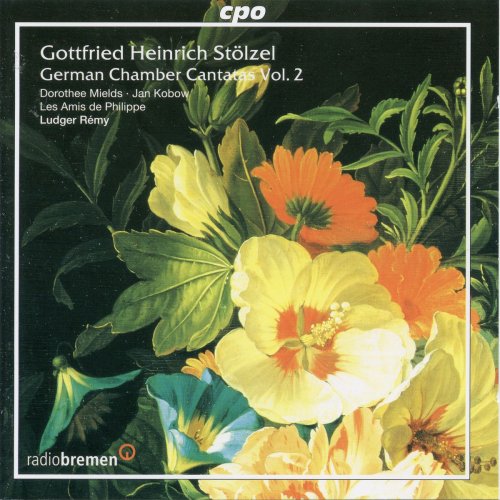
Artist: Les Amis de Philippe
Title: Stölzel: German Chamber Cantatas, Vol. 2
Year Of Release: 2004
Label: CPO
Genre: Classical
Quality: FLAC (tracks)
Total Time: 65:03 min
Total Size: 329 MB
WebSite: Album Preview
Tracklist:Title: Stölzel: German Chamber Cantatas, Vol. 2
Year Of Release: 2004
Label: CPO
Genre: Classical
Quality: FLAC (tracks)
Total Time: 65:03 min
Total Size: 329 MB
WebSite: Album Preview
1. Aria (Accompagnato?) Zorn'ge Sterne, LaBt Mich Sterben
2. Recitativo Grausamer SchluB
3. Aria Mein Herze Schwimmt In Blut Und Tranen
4. Recitativo O Bittrer KuB, Der Gall Und Wermut Bei Sich Fuhrt
5. Aria Dacapo Zorn'ge Sterne
6. Aria Flieht, Ihr Schaffe, Flieht Von Hinnen
7. Recitativo Ihr Nymphen, Flieht, Und Ruhrt Nicht
8. Aria Lang Genug Hat Mich Gequalet
9. Recitativo Zu Guter Nacht, Ihr Stolzen Turme Und Palaste
10. Aria Geh Und Eile Geschwind
11. Recitativo So Lange Mich Die Stadt In Festen Mauern
12. Aria Ruhe Und Zufriedenheit
13. Aria Ja, Mein Engel, Dieses Herze, Recititivo Doch Himmel, Wie Ist Mir?
14. Aria Traumet Fort, Betorte Sinnen
15. Recitativo So MuB Ich Denn Zu Meiner Pein
16. Aria Stell Es Ihr Im Traume Fur
17. Recitativo Doch Solt Ich Vor Der Zeit Erbleichen
18. Recitativo Ihr Augen, LaBt Den Tranenbachen
19. Aria Ihr Meiner Not Getreue Zeugen - Recitativo Allein Ich Scheue Mich - Aria Geliebter Schmerz, Du Bist Mein Eigen
20. Aria Sage Ihm, DaB Diese Seele In Getreuen Banden Geht
21. Aria Ihr Stillen Seufzer, Gehet
22. Recitativo Ich Kenne Dich Noch Nicht, Geliebtes Augenlicht
23. Aria Unbekannt, Doch Schone Seele
24. Recitativo Ich Bin Es Schon Gewohnt
25. Aria Wieviele Seufzer Hast Du Nicht
26. Recitativo Ach! Konnt Ich Deinen Zorn Vergnugen
27. Aria Es Mag Dein Eifer Sich Erhitzen
28. Aria Von Dem EinfluB Zweier Sternen
29. Recitativo Kein Eisen Folgt So Sehnend Nach
30. Aria Ich Kusse Die Hoffnung
31. Recitativo Doch Armes Herz
32. Aria So Fahret Wohl, Geliebte Augen
Like most European countries Germany came under the influence of Italian music during the 17th century. German composers went to Italy and Italian musicians came to Germany and spread the new style there. And as at the end of the century, the cantata – closely connected to the opera - developed into one of the most prominent genres of vocal music in Italy. German composers started to use the form of the Italian cantata in their church music. In the early 18th century the Italian cantata had reached its more or less definitive form. Among its features were the da-capo aria and the clear differentiation between recitative and aria. In Germany Erdmann Neumeister published libretti for church cantatas which followed this model.
But in secular music German composers were always reluctant to adopt the Italian style. Most secular cantatas known in Germany were of Italian origin, and on Italian texts. Examples include the cantatas of Agostino Steffani, the Italian-born composer who spent the largest part of his life in Germany. This began to change when composers like Reinhard Keiser (1714) and Georg Philipp Telemann (1735-37) began to compose cantatas in Italian style. They used both Italian and German texts, although Telemann predominantly made use of German texts. In general, though, cantatas for solo voice with basso continuo on German texts were not composed all that often. One of the composers who turned attention to this kind of cantata was Gottfried Heinrich Stölzel.
Stölzel was born in Grünstädtel in the Erzgebirge region of Saxony. He went to Leipzig University, where he was attracted to the opera and the Collegium Musicum, founded by Telemann, and at that time led by Melchior Hoffmann. His first post was that of music teacher in Breslau. He received commissions for operas for Naumburg and the courts of Zeitz and Gera.
In 1713 he travelled to Italy, where he met some of the leading composers of the time, like Gasparini, Vivaldi and Alessandro Marcello in Venice, as well as Antonio Bononcini and Domenico Scarlatti in Rome. In Florence he composed a number of cantatas, but it seems he declined invitations to stay for religious reasons.
After his return to Germany he spent some time in Bayreuth, then became Kapellmeister at the court of Gera. In 1720 he was appointed as Kapellmeister at the court of Saxe-Gotha, where he stayed until his death.
Stölzel was highly valued by his contemporaries. Johann Mattheson called him one of the "learned and great masters" of his time, and it is thought Johann Sebastian Bach has performed some of Stölzel's sacred cantatas in Leipzig. He included the Partita in g minor in the 'Clavierbüchlein vor Wilhelm Friedemann Bach'.
He also had a reputation as a theorist; one of his treatises dealt with the subject of the recitative, the first in Germany about this matter.
The recitative is especially suited to display the dramatic development within a piece of music, either a cantata or an opera. His writings about the recitative can therefore be interpreted as a reflection of his strong interest in the dramatic aspect of music. That must have been the main incentive to devote his attention to the secular cantata. In all he composed 16 cantatas for solo voice and basso continuo. The present disc is the second of the complete recording of these cantatas, and contains the cantatas 9 to 16.
All of them are written for high voice, which in the 18th century usually means: soprano. "We decided to assign the cantatas variously to a soprano or a tenor, depending on the poetic context. In some cases, however, it seems appropriate to present a single text as a dialogue between the two singers, representing two different points of view or a man and a woman. We have also chosen considerably varying continuo forces depending on the context", writes Ludger Rémy in the liner notes. This all makes a lot of sense considering Stölzel's obvious interest in musical drama. He composed a number of operas of which all have been lost. But the libretti of some of them are extant, and it has been discovered that several text fragments in the cantatas also appear in these librettos. It is therefore thought some cantatas may be 'reductions' of scenes from his operas.
It is surprising that these cantatas haven't been recorded before, since they contain excellent music. There is certainly no lack of drama. One of the most striking examples is the cantata no. 12, ‘Ja, mein Engel, dieses Herze'. It starts with a lyrical aria, which suddenly bursts into a very dramatic recitative: "Yes, my angel, this my heart lives and loves for you alone. Accept it my other I, and grant me ... - But heavens, what has become of me? What am I then ... where is my comfort vanished?" The abrupt change in mood comes as a real shock, also because the performers give it all. Also strongly operatic is the aria 'Es mag dein Eifer sich erhitzen' from Cantata no. 15: "Although your jealousy burns hot and though your eyes are flashing flames, nonetheless I remain true-hearted."
The recitatives contain a lot of contrast, which generally is realised very well by singers and continuo players. Jan Kobow is especially shining in this respect. Dorothee Mields isn't always free enough in her performance of the recitatives. She is best in lyrical passages anyway.
The basso continuo is remarkable in that it strongly illustrates or, in the introductory bars, announces the Affekt of the aria. The fast figures in the aria 'Flieht, ihr Schaffe' from Cantata no. 10 illustrate the text which says: "Flee, ye sheep, flee far away". The same thing happens in Cantata no. 10, in the aria 'Geh und eile': "Go and hurry, fly away".
Stölzel must have written these cantatas for highly accomplished singers as some of the arias are technically very demanding. In the Cantata no. 9, for instance, there are long melismas in the first aria, and big leaps in the second.
This is a very fine recording of excellent music. If these cantatas are a true reflection of the quality of Stölzel's operas, it is a terrible shame they are all lost.
But in secular music German composers were always reluctant to adopt the Italian style. Most secular cantatas known in Germany were of Italian origin, and on Italian texts. Examples include the cantatas of Agostino Steffani, the Italian-born composer who spent the largest part of his life in Germany. This began to change when composers like Reinhard Keiser (1714) and Georg Philipp Telemann (1735-37) began to compose cantatas in Italian style. They used both Italian and German texts, although Telemann predominantly made use of German texts. In general, though, cantatas for solo voice with basso continuo on German texts were not composed all that often. One of the composers who turned attention to this kind of cantata was Gottfried Heinrich Stölzel.
Stölzel was born in Grünstädtel in the Erzgebirge region of Saxony. He went to Leipzig University, where he was attracted to the opera and the Collegium Musicum, founded by Telemann, and at that time led by Melchior Hoffmann. His first post was that of music teacher in Breslau. He received commissions for operas for Naumburg and the courts of Zeitz and Gera.
In 1713 he travelled to Italy, where he met some of the leading composers of the time, like Gasparini, Vivaldi and Alessandro Marcello in Venice, as well as Antonio Bononcini and Domenico Scarlatti in Rome. In Florence he composed a number of cantatas, but it seems he declined invitations to stay for religious reasons.
After his return to Germany he spent some time in Bayreuth, then became Kapellmeister at the court of Gera. In 1720 he was appointed as Kapellmeister at the court of Saxe-Gotha, where he stayed until his death.
Stölzel was highly valued by his contemporaries. Johann Mattheson called him one of the "learned and great masters" of his time, and it is thought Johann Sebastian Bach has performed some of Stölzel's sacred cantatas in Leipzig. He included the Partita in g minor in the 'Clavierbüchlein vor Wilhelm Friedemann Bach'.
He also had a reputation as a theorist; one of his treatises dealt with the subject of the recitative, the first in Germany about this matter.
The recitative is especially suited to display the dramatic development within a piece of music, either a cantata or an opera. His writings about the recitative can therefore be interpreted as a reflection of his strong interest in the dramatic aspect of music. That must have been the main incentive to devote his attention to the secular cantata. In all he composed 16 cantatas for solo voice and basso continuo. The present disc is the second of the complete recording of these cantatas, and contains the cantatas 9 to 16.
All of them are written for high voice, which in the 18th century usually means: soprano. "We decided to assign the cantatas variously to a soprano or a tenor, depending on the poetic context. In some cases, however, it seems appropriate to present a single text as a dialogue between the two singers, representing two different points of view or a man and a woman. We have also chosen considerably varying continuo forces depending on the context", writes Ludger Rémy in the liner notes. This all makes a lot of sense considering Stölzel's obvious interest in musical drama. He composed a number of operas of which all have been lost. But the libretti of some of them are extant, and it has been discovered that several text fragments in the cantatas also appear in these librettos. It is therefore thought some cantatas may be 'reductions' of scenes from his operas.
It is surprising that these cantatas haven't been recorded before, since they contain excellent music. There is certainly no lack of drama. One of the most striking examples is the cantata no. 12, ‘Ja, mein Engel, dieses Herze'. It starts with a lyrical aria, which suddenly bursts into a very dramatic recitative: "Yes, my angel, this my heart lives and loves for you alone. Accept it my other I, and grant me ... - But heavens, what has become of me? What am I then ... where is my comfort vanished?" The abrupt change in mood comes as a real shock, also because the performers give it all. Also strongly operatic is the aria 'Es mag dein Eifer sich erhitzen' from Cantata no. 15: "Although your jealousy burns hot and though your eyes are flashing flames, nonetheless I remain true-hearted."
The recitatives contain a lot of contrast, which generally is realised very well by singers and continuo players. Jan Kobow is especially shining in this respect. Dorothee Mields isn't always free enough in her performance of the recitatives. She is best in lyrical passages anyway.
The basso continuo is remarkable in that it strongly illustrates or, in the introductory bars, announces the Affekt of the aria. The fast figures in the aria 'Flieht, ihr Schaffe' from Cantata no. 10 illustrate the text which says: "Flee, ye sheep, flee far away". The same thing happens in Cantata no. 10, in the aria 'Geh und eile': "Go and hurry, fly away".
Stölzel must have written these cantatas for highly accomplished singers as some of the arias are technically very demanding. In the Cantata no. 9, for instance, there are long melismas in the first aria, and big leaps in the second.
This is a very fine recording of excellent music. If these cantatas are a true reflection of the quality of Stölzel's operas, it is a terrible shame they are all lost.
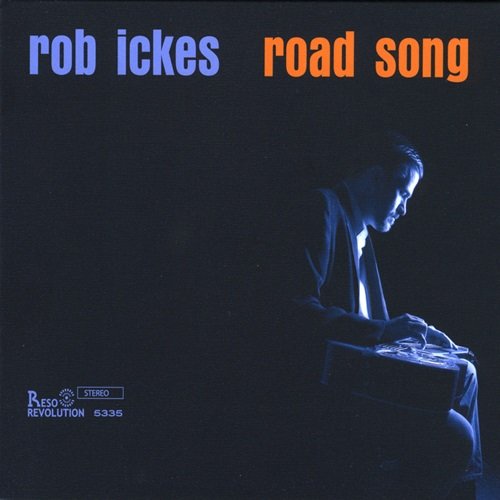

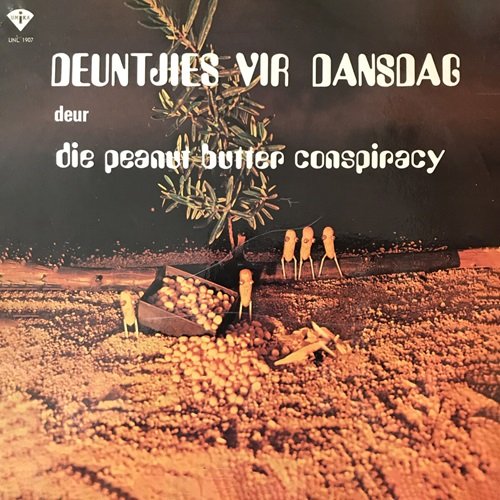
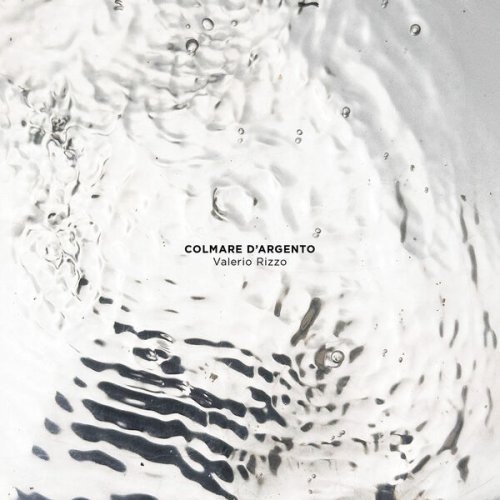
![The Mood Mosaic - Soul Seduction (2025) [Hi-Res] The Mood Mosaic - Soul Seduction (2025) [Hi-Res]](https://www.dibpic.com/uploads/posts/2025-12/1766135288_d5rmbmuwqtmya_600.jpg)
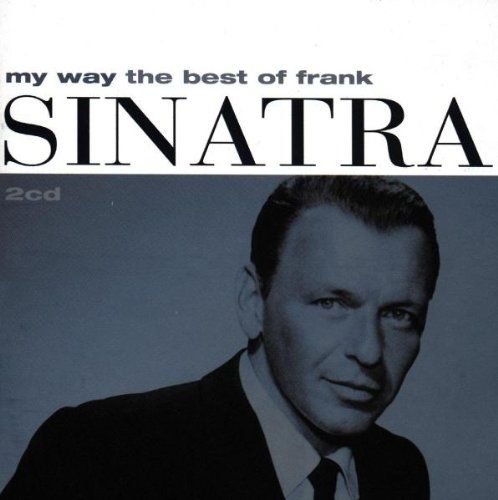
![Clifton Chenier - Squeezebox Boogie (1999) [Hi-Res] Clifton Chenier - Squeezebox Boogie (1999) [Hi-Res]](https://img.israbox.com/img/2025-12/20/cmlfho2wfdjon4pewnwrm16l7.jpg)
![The Mood Mosaic - The Sexploitation (Pulp Grooves From The Mondo Porno Vault) (2025) [Hi-Res] The Mood Mosaic - The Sexploitation (Pulp Grooves From The Mondo Porno Vault) (2025) [Hi-Res]](https://www.dibpic.com/uploads/posts/2025-12/1766131648_uhod8d4qn4msi_600.jpg)
![The Baroque Jazz Ensemble - The Baroque Jazz Ensemble (feat. Ira Schulman) (2025) [Hi-Res] The Baroque Jazz Ensemble - The Baroque Jazz Ensemble (feat. Ira Schulman) (2025) [Hi-Res]](https://img.israbox.com/img/2025-12/19/yehoqbmzkuwk180c26lz85clx.jpg)